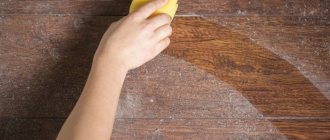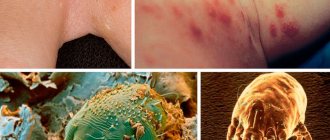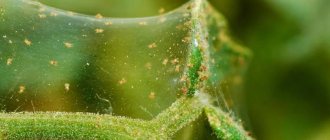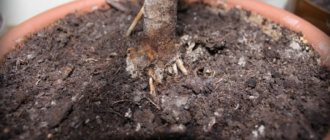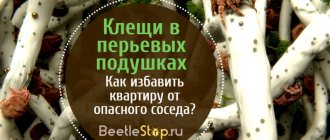Dust mites (otherwise known as house dust mites) are present in every room where a person lives or visits. These synanthropic insects simply cannot live without people, since the main food products of these creatures are dead cells of the human epidermis. In our article we will take a detailed look at what dust mites are and what they look like, and whether they bite people. We'll tell you what methods are best to get rid of them and what preventive measures to take to prevent their further spread.
Description
Dust mites are very small insects (type - arthropods) belonging to the class of arachnids. But this does not mean that they are like a spider in everything. Their limbs are not so long, they are poorly developed, but meanwhile, their strength is enough to move freely. They crawl slowly, constantly looking for provisions, which, in most cases, are dead cells of the human epidermis or the skin of domestic animals.
What do dust mites really look like? Most of all, they resemble bugs if their wings are torn off and their legs are shortened. A special difference is that they do not have a clear division of the body into segments. Their entire carcass, if you can call it that, is a solid “cutlet” (in a reduced form, to a size of 0.1-0.5 mm), slightly narrowed towards the stigma and thickened towards the back of the abdomen. In the front part, the stigma has a pair of small processes, reminiscent of hypertrophied mites, with which the insect sends the edible it finds into its mouth. Some compare them to hippos reduced to microscopic size. This is what a dust mite looks like in the photo, magnified many times over.
They live from 60 to 80 days, during which they manage to go through their entire life cycle, that is, to eat and copulate, after which the female lays up to 60 eggs.
Linen louse
Linen lice are blood-sucking ectoparasites of humans. They settle in clothes, in underwear, in folds and on the seams of fabric, from where several times a day they crawl onto the human body, bite him and suck blood, and then return to the clothes again. It is these parasites that are most often mistaken for “linen mites”, which leave bites on the skin.
The photo below shows the bite marks of these insects:
And this picture shows the louse itself at a significant magnification:
A more strict and scientifically accepted name for this insect is body louse. It more specifically indicates that these insects settle in clothing, and not in bedding, since only on clothing do they have almost constant access to the human body - a source of food.
In everyday life, there may be completely different variants of the names of these insects - from “clothing insects” to “rag insects”.
This is interesting
It is believed that the body louse is a species that was formed only due to its proximity to humans. Scientists believe that its ancestor is the head louse, which constantly lives on the scalp. Over the many thousands of years during which people used clothing, some lice adapted to life in clothing, developed anatomical features that allowed them to feel most safe here (for example, a certain shape of paws), and moved so far from their original shape that they Currently, under normal conditions they do not interbreed. In the laboratory, the offspring obtained from body louse and head louse hybrids are quite fertile, which indicates their very close relationship.
Many researchers even believe that the body louse is not a separate species, but only a morphotype of the head louse, which only over time in the future will be able to acquire such pronounced differences that it can be recognized as an independent taxonomic unit. If this hypothesis is correct, then it was people and their clothes that created the body louse as it is. If people didn’t wear clothes, this look wouldn’t have appeared in principle.
Linen lice most often settle on the clothes of those people who do not follow basic hygiene rules. If you wash your laundry at least once a week and have 2-3 shifts so that the same set of clothes stays in the closet for at least a week, then lice simply will not be able to live here. These insects die in the water, and even if by some miracle they survive the wash, they will then die of hunger, since they cannot go without food for more than 3 days.
Consequently, they can live, develop and reproduce only on underwear, which a person wears for months without changing or washing.
On a note
A louse found on a bed is very rare. As a rule, an insect that falls from clothing or from a head will almost certainly die, because due to its inability to move quickly, it is unlikely to be able to climb onto a person again.
Obviously, in this case, such “clothes mites” are most often a problem of people leading an asocial lifestyle: homeless people, vagrants, refugees, as well as prisoners in prisons in third world countries.
People who take care of their clothing and practice good hygiene are very rarely bothered by these parasites. Even children who are not particularly prone to order, but are controlled by their parents, are usually left alone by linen lice.
Linen lice bites are not painful, but they cause itching, sometimes quite severe. Reddish spots remain at the sites of bites, but skin punctures themselves, much less blisters, usually do not appear. Only people with highly sensitive skin or allergy sufferers may develop more severe symptoms - swelling, a rash around the bite sites, sometimes even fever.
In areas with a poor epidemiological situation, body lice can carry typhus and some other life-threatening infectious diseases. A person who becomes ill after being bitten may die without timely treatment. However, today both typhus and other diseases carried by lice are relatively rare, especially in the civilized world.
Lice are easily visible, albeit small insects. The body length of an adult is 3-4 mm, that is, it can be seen without additional devices. And if the louse is engorged and there is a drop of blood in its abdomen, then the parasite becomes even more noticeable.
The photo below shows an adult linen louse (unlike ticks, it has 6 legs, not 8):
In addition to lice, you can find their eggs on clothes - nits, which are reliably glued by the females to the fibers of the fabric or to the pile. They look just like nits on human hair:
The most important feature of linen lice is that they cannot live anywhere except in clothing. They do not settle in beds or sofas, and cannot live in dust or on hair, which is why they differ from other arthropods, which are sometimes called linen mites.
What is dust and why do dust mites live in it?
This will come as a shock to many, but more than 20% of room dust consists of particles of the dead upper layer of skin, called the epidermis, flying off us. Moreover, the more people live in an apartment, the richer the content of skin flakes in the overall mixture will be. In addition to them, the household dust suspension contains:
- smoke particles (soot) 3%;
- fibers of various fabrics and paper – 12%;
- various types of mineral particles – 34%;
- flower pollen – 6%;
- other pollutants (fragments, flakes of animal hair, fluff, etc.) – 25%.
In winter, accordingly, there is less flower pollen, but there is more clothing, and therefore this 6% migrates to what falls off from winter outerwear. This is what dust looks like under a microscope.
Favorite places to live
The more carpets, upholstered furniture and other textile decorations and interior items there are in the house, the more and faster dust will form in it. For example, carpets are a favorite habitat for dust mites. A huge amount of “provisions” always settles on them. The next photo shows dust mites that feel great among carpet textile fibers.
Separately, it is worth mentioning feather and down pillows, as well as mattresses. Scientists managed to have a hand here too, calculating that up to two million dust mites constantly live in an ordinary average double bed. And feather and down fillings, if there is a lack of food, can themselves become food for these microscopic creatures.
Household and other appliances deserve a special mention. Old monitors, stereos and DVD players are potential cities and breeding grounds for dust mites. There is always a lot of dust among the microcircuits, capacitors, resistors and other radio equipment, but if there is a lot of dust, and no one cleans it out for a long time, mites live in it especially freely.
Can dust mites be seen with the naked eye?
When asked what a dust mite looks like with the naked eye, we will answer that these creatures cannot be seen even under a magnifying glass. On average, the size of ticks is 0.2 mm, which means that without special equipment these creatures simply cannot be detected. And the way dust mites look under a microscope causes horror and disgust for many. These are pests with a repulsive appearance, and from their very appearance it becomes clear that nothing good can be expected from them.
Ear
The second name is kozheed. A common animal parasite. Ear mites are common in cats and dogs. It is localized in the auricle, makes passages there, leading to inflammation, suppuration, itching, and other unpleasant symptoms. The tick is white, body size 1-2 mm. You can examine the parasite using a magnifying glass.
Infection occurs on the street. Within a few hours, a tick with a white belly crawls up to the ear and begins to parasitize. The diseases they cause are otodecosis and otodedecosis. Treatment is carried out with antiparasitic drugs. The duration of the course depends on the degree of damage to the animal.
Types of ticks
Dust mites from a medical point of view
Let's now look at the problem from a medical point of view: what is a dust mite? And how to get rid of it? And in general, is this possible? Let's start with the first question. Doctors warn that dust mites are harmful pathogens of bronchial asthma. They can often be carriers of other dangerous infections. In addition to bronchial asthma, they can also cause:
- conjunctivitis;
- rhinitis;
- respiratory allergy;
- allergenic dermatitis;
- Quincke's edema.
Any reaction of the human body to the effects of mites and the enzymes they secrete is summarized under the single name “mite sensitization.”
Do dust mites bite?
We have already seen what dust mites look like. From the photos provided, it becomes clear that they do not have “biting” organs as such. In everyday life, we are used to calling a bite - pricks with a sting (for example, a mosquito), pinching the skin with the front claws on the snout (some spiders, forest mites, meadow mites, beetles), etc. But this does not apply to dust mites. Even if they have a hole with some kind of mandibles, with which insects absorb all the same scales of the upper layer of the epidermis that once fell off a person, then they are simply not able to bite the skin tissue with them.
They will not be able to pinch her in any noticeable way. These creatures are so tiny that any of their mechanical effects on the epidermis will be unnoticeable from an anatomical point of view. By their effects on skin tissue, they will not be able to excite more than a single nerve receptor in the human body, regardless of its location.
Plus, dust mites can only digest particles of dead epidermis. Living skin is not food for them. In scale and biological proportions, a tick bite can be compared to what it would be like for a person to want to bite the thigh of a boar that is 100 times larger in size. Firstly, the material is too rough - not suitable for human teeth, and secondly, the surface tissue of a boar's thigh will not be suitable for food.
But some may protest, they say, we’ve all seen what dust mite bites look like, so where do they come from if mites don’t bite?
What is a dust mite bite?
Dust mite bites are popularly known as redness that appears in places where human skin has been exposed to the enzymes they secrete, which permeate the feces of microscopic insects. Each tick can “go to the toilet in a big way” 20 times per day, so on the scale of a double bed this will be a real disaster for a person in whom this enzyme can cause an allergic reaction.
Usually people have a strong immunity to this substance. But there are still exceptions. In addition, there are many varieties of dust mites themselves, and it is possible that feces of a certain variety may not be “suitable” for some person.
Why are bloodsucker bites dangerous for humans?
Despite the fact that many viruses, causative agents of dangerous diseases, were found in bedbug droppings, scientists were unable to prove that pests are capable of infecting humans with various ailments. Apparently, nature has taken care of constant food for the bloodsuckers, because if the owner dies, the bug will have nothing to eat.
Bloodsucker bites are not so harmless:
- Serious allergic reactions, itching, and rashes on the body often occur. In sensitive people, Quincke's edema occurs, which is life-threatening (risk of suffocation). An allergic reaction to varying degrees has been detected in 80% of all inhabitants of the planet to the bites of these insects;
- Many people scratch very itchy wounds, opening the way for various infections, which leads to suppuration;
- Iron deficiency anemia is extremely rare and manifests itself when there are a huge number of pests in the house. This problem is also typical for young children;
- many people lose normal sleep and mental peace. After all, no one will be pleased to know that every night little bloodsuckers feast on your blood.
Who should be most concerned about dust mites?
People with asthma and children are most often susceptible to tick-borne sensitization. If a child, for no apparent reason, suddenly starts coughing and develops a runny nose, and there are no outbreaks of diseases around, most likely the reason is the baby’s body’s reaction to the presence of too many dust mites in the home.
Also, symptoms of dust mite allergy in children are pronounced redness on the child’s skin (dermatitis) that appears out of nowhere. There is no need to be afraid of such irritations, since modern medicine has easily learned to cope with such allergic manifestations. A photo of dust mite bites on a person’s body looks quite unpleasant.
If you notice similar irritation on your child’s skin, this means that the number of insects has exceeded all permissible limits and it’s time to take house cleaning seriously, arranging a real Armageddon for uninvited roommates.
Manifestations of allergic reactions
The consolation is the fact that the linen mite is not a carrier of diseases and does not feed on human blood. However, a victim of this parasite will notice traces in the form of small redness (wounds), skin itching (irritation), and scratching at the bite sites are often noted. Such marks are an indicator of an allergy, not the bites themselves.
The tick dies, turning into dust, like its waste products. A person is constantly in contact with a large amount of acarid excrement, which has turned into garbage, and inhales it for several days. It is this dust that causes allergic reactions. Allergy sufferers have the hardest time when coming into contact with linen mites: such people may experience a rise in body temperature, watery eyes, redness of the eyes, and in rare cases, skin pathologies such as eczema and dermatitis may even develop.
Mite allergy is manifested by fever, lacrimation, dermatitis
All these phenomena can be complicated by coughing, sneezing, and sore throat. If a child has symptoms of bronchial asthma and the disease does not go away with adequate treatment, it is appropriate to visit an allergist to identify the pathogen, which can be the vulgar linen mite.
Destruction measures
In a specialized store you can find a wide variety of products that can help get rid of ticks that have multiplied in your home. In most cases, these products are sprays that are completely safe for humans, but at the same time, lethal for hated insects.
They should be used to treat mattresses, pillows and blankets. The removed bedding can be soaked in hot water so that all the creatures nesting in it can die. The most comfortable temperature for these insects is 15-25 °C. Frost or high temperatures are fatal to them.
Special cleaning products in the form of concentrated shampoos are produced for treating carpets and rugs. If you wipe floors and other surfaces with a solution of such a product, as well as clean carpets, all the pests inhabiting them will certainly go to the next world.
Be that as it may, no remedy will help you get rid of dust mites 100%. But it is possible for humans to reduce the insect population to a safe minimum.
Bed bugs
Bed bugs are sometimes called ticks simply by mistake - they stick to the skin and suck blood like forest ticks, and these parasites can actually often be found on bedding.
At the same time, bed bugs have little in common with true mites. For comparison:
- A bedbug bites many times in one foray, sucks blood for a short time, and after quickly satiating, hides in a shelter. The ixodid tick bites only once, and having attached itself, it sucks blood for several days, and only then detaches itself;
- Bedbugs have 6 legs, and ticks have 8;
- Bed bugs live only in human housing (with rare exceptions - for example, they sometimes live in caves where bats live), and ixodid ticks live in the wild.
The habitats of bed bugs in an apartment can be very different. Bedbugs hide in sofas, beds, under the upholstery of upholstered furniture, under peeling wallpaper, behind baseboards, under cabinets, and are found in electrical outlets, household appliances, and flower pots. Here you can find so-called “nests”, where a large number of insects gather, eggs, chitinous coverings, and excrement accumulate.
At the same time, bed bugs rarely settle in linen and clothing. A parasite may end up here by chance, but if a person is wearing such clothes, the insect will try to retreat as quickly as possible so as not to run the risk of being discovered and killed.
Thus, in any case, the term “clothes mite” is a misnomer. How to understand what kind of parasite or pest was found at home and what can be done to reliably get rid of it - let's figure it out...
Prevention
To prevent pests from breeding again, basic preventive measures should be followed. Here is a list of actions that will help keep the dust mite population under control:
- A general wet cleaning should be carried out weekly in each residential area. If you don’t want to spend money on special products, you can splash a little vinegar essence into a basin or bucket of water. The smell will go away within an hour, but the creatures will die with even greater intensity.
- All upholstered furniture must be thoroughly vacuumed. The disadvantage of ticks is their light weight and clumsiness. They don't run away from a vacuum cleaner like rats. Moreover, due to their underdeveloped minds, they will not at all understand how such a cruel relocation to a landfill befell them. They nest mainly in the upper layers of upholstered furniture, since there is no food for them inside the upholstery. Therefore, a larger number of their “personnel” will definitely be collected with a vacuum cleaner.
- In the summer, take pillows, blankets and mattresses out to dry in the sun. Not only that, insects will die from excessive overheating, but ultraviolet radiation itself is also destructive for them. In a few hours of such a “sunbath”, your bedding will get rid of the lion’s share of the total number of ticks nested in them.
- In winter, in sunny, frosty weather, your laundry taken out into the fresh air will be completely free of every single tick. If the sun was unable to penetrate inside a down or feather pillow in the summer, then the frost will certainly penetrate it to the ground.
We should not forget that the fewer stale things, carpets and other products, small parts, hard-to-reach cracks and old household appliances in the apartment, the less number of breeding grounds you will have that produce ever new hordes of mites. Get rid of everything unnecessary, and you, without any doubt, will breathe easier, and this was said in the literal sense of the word.
